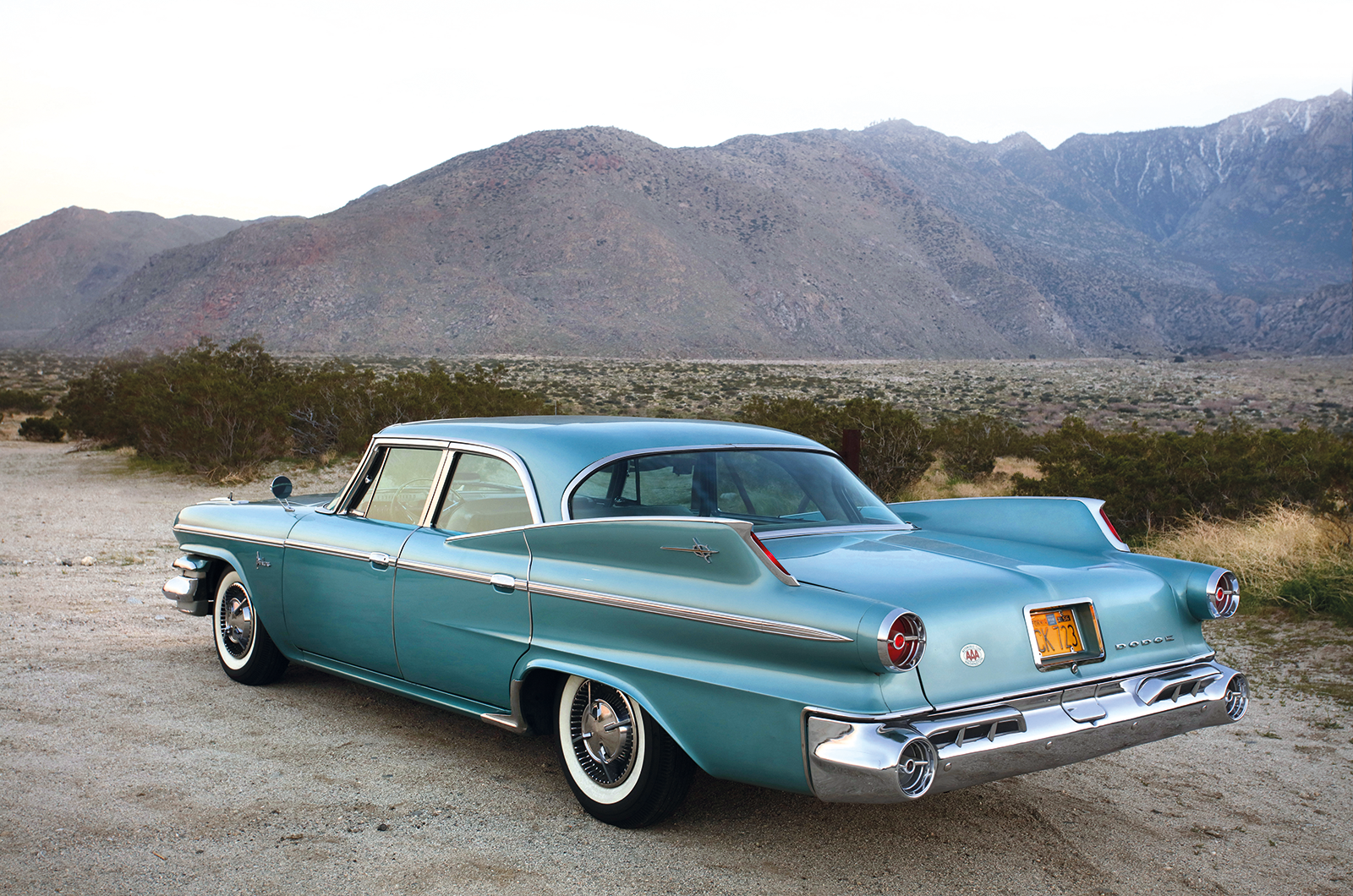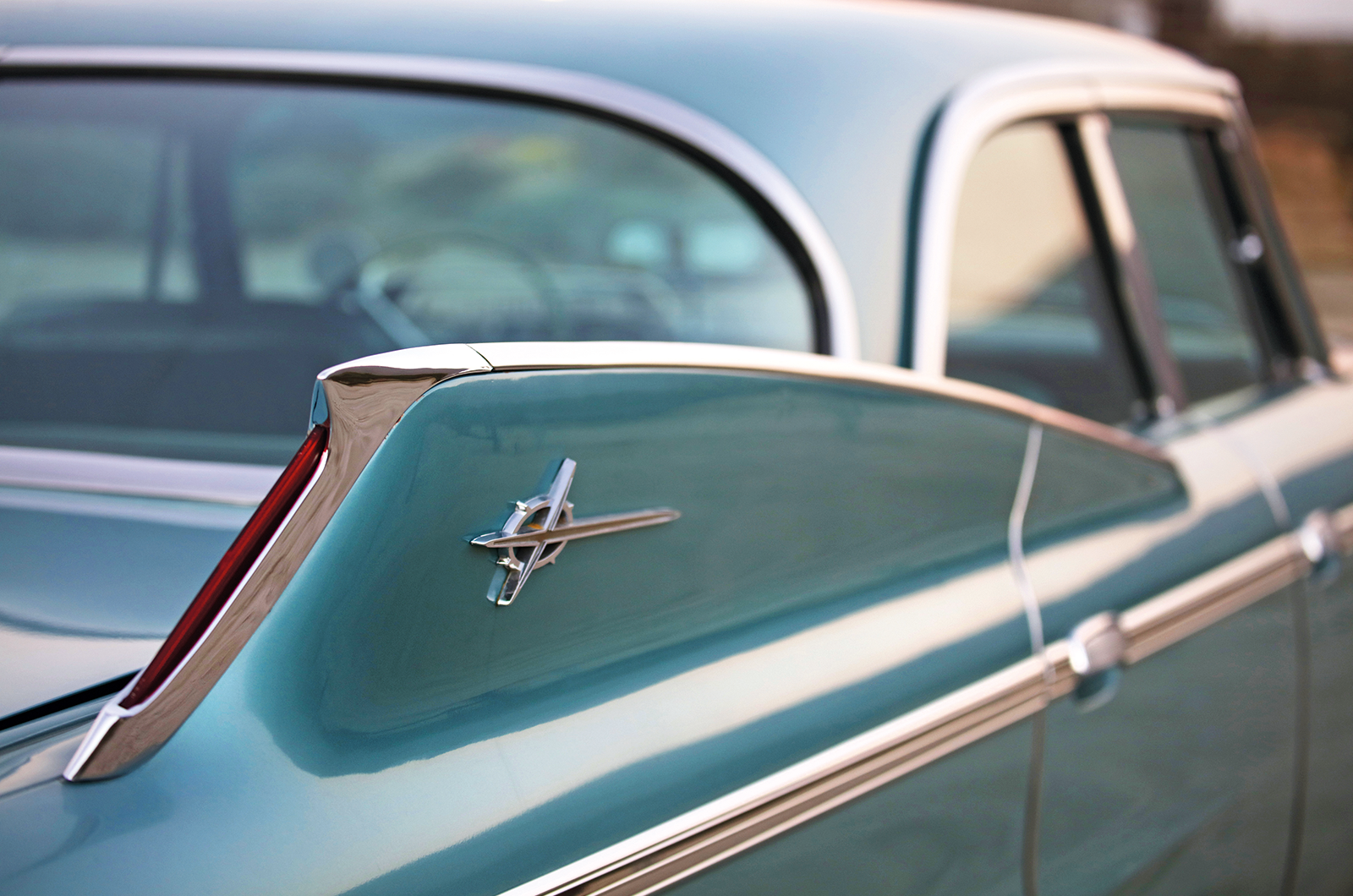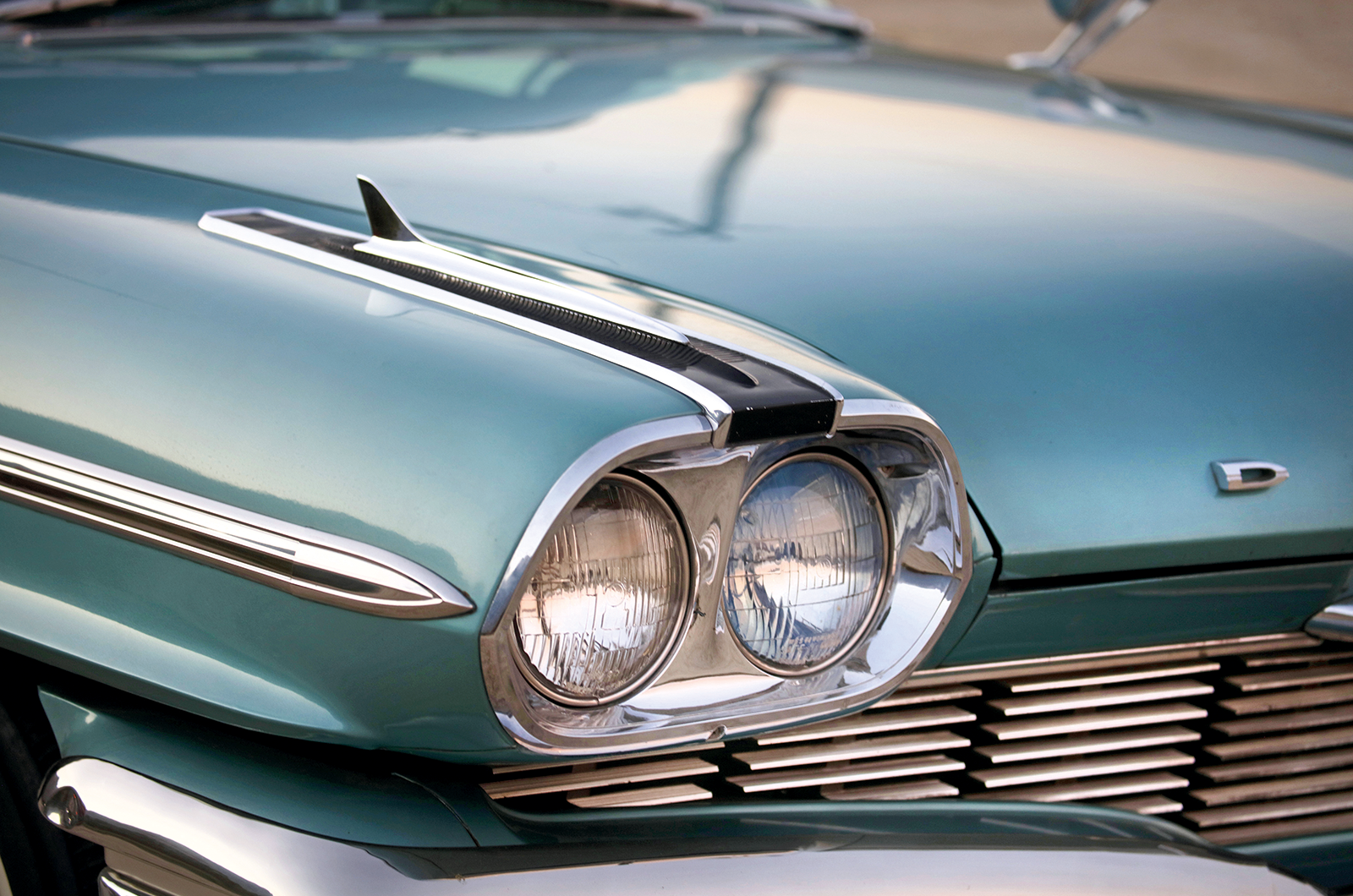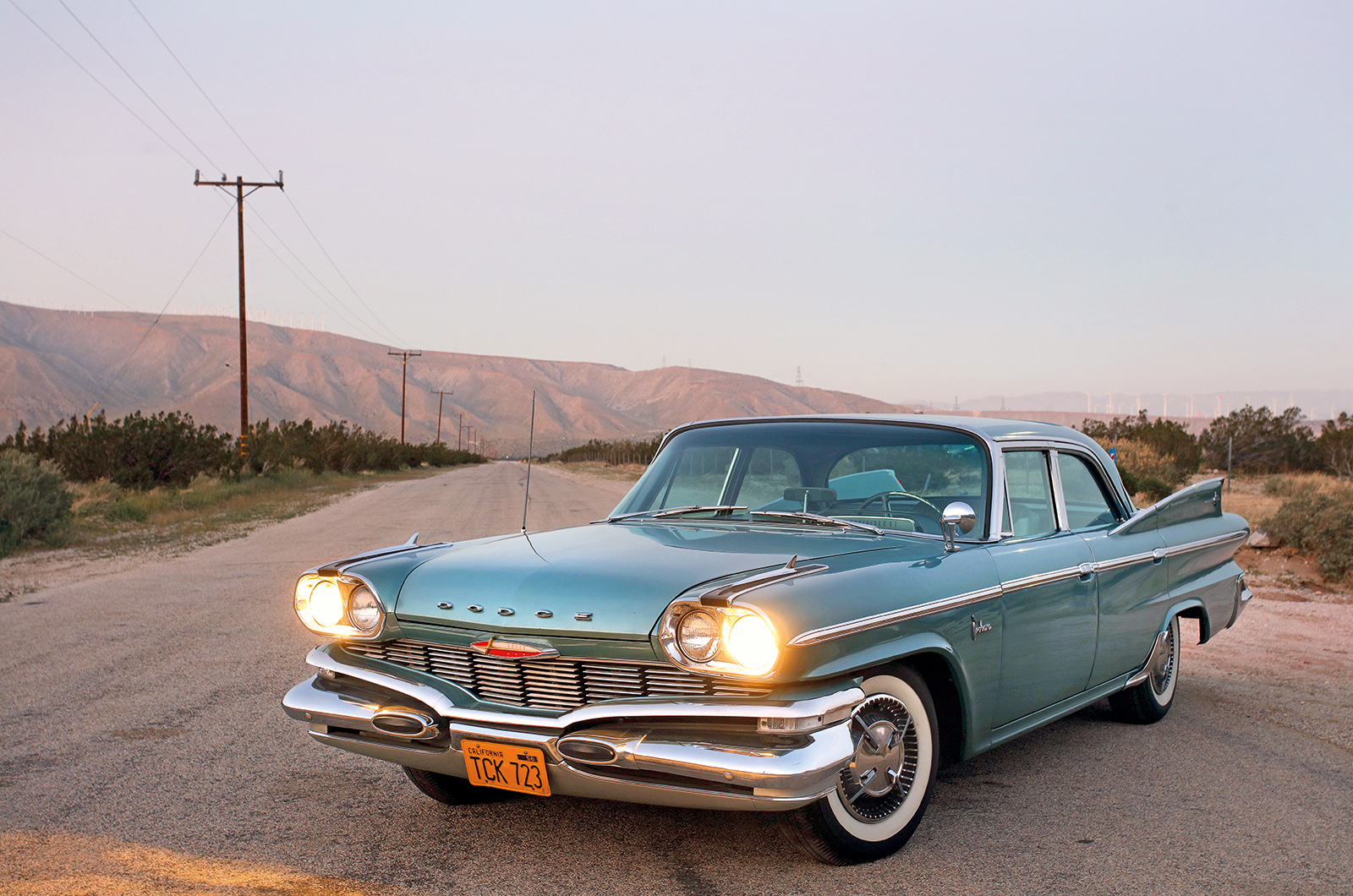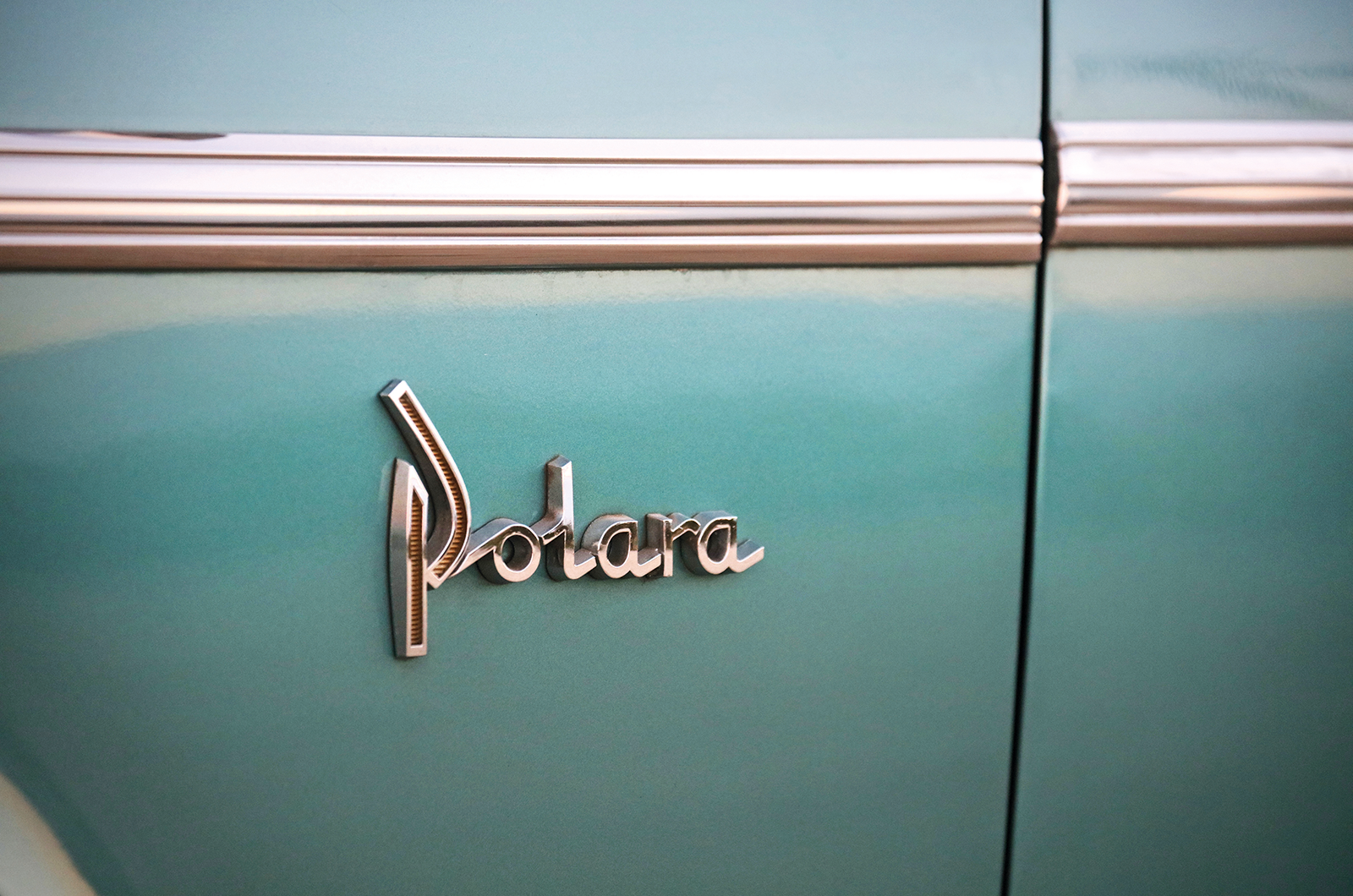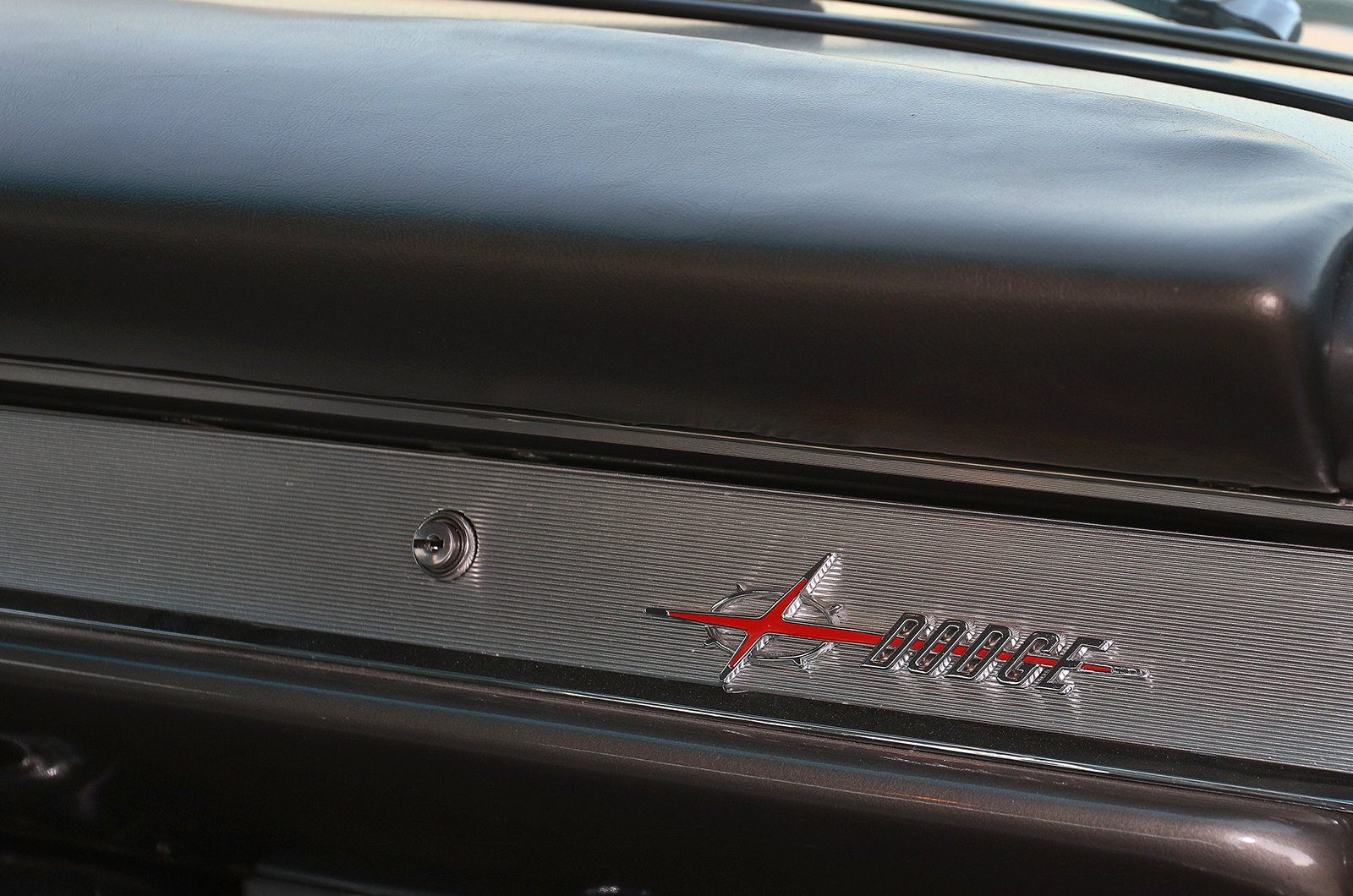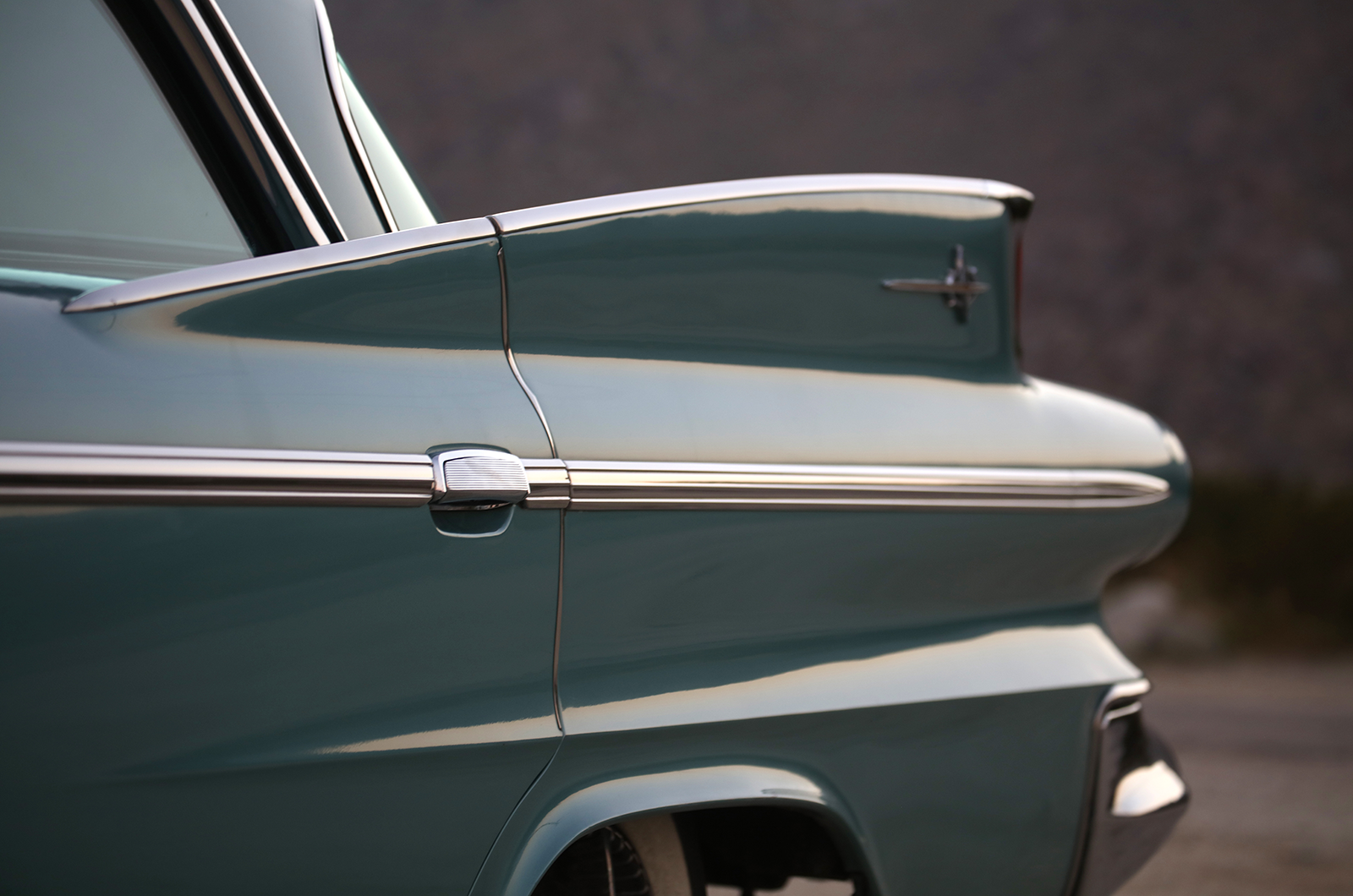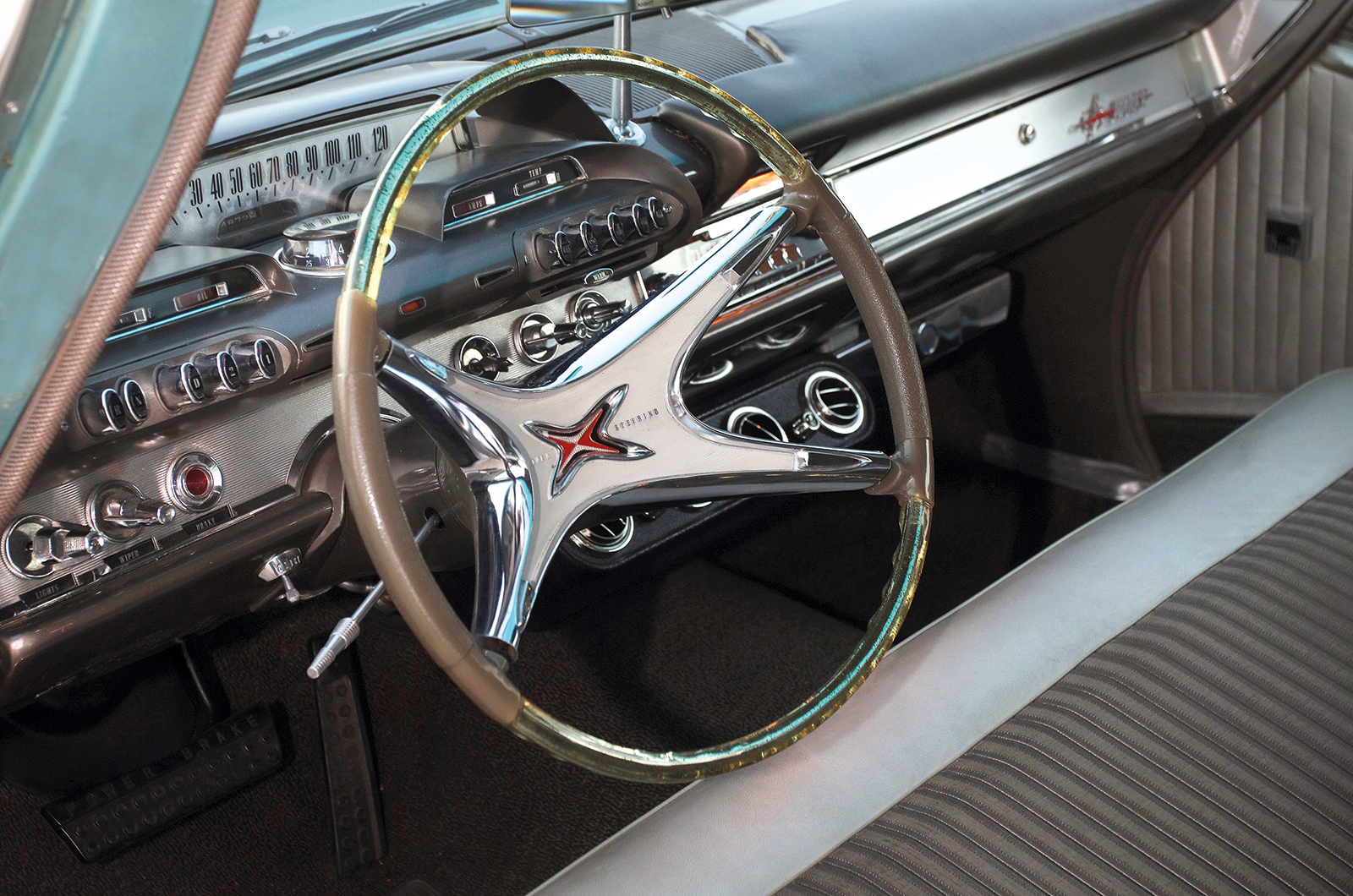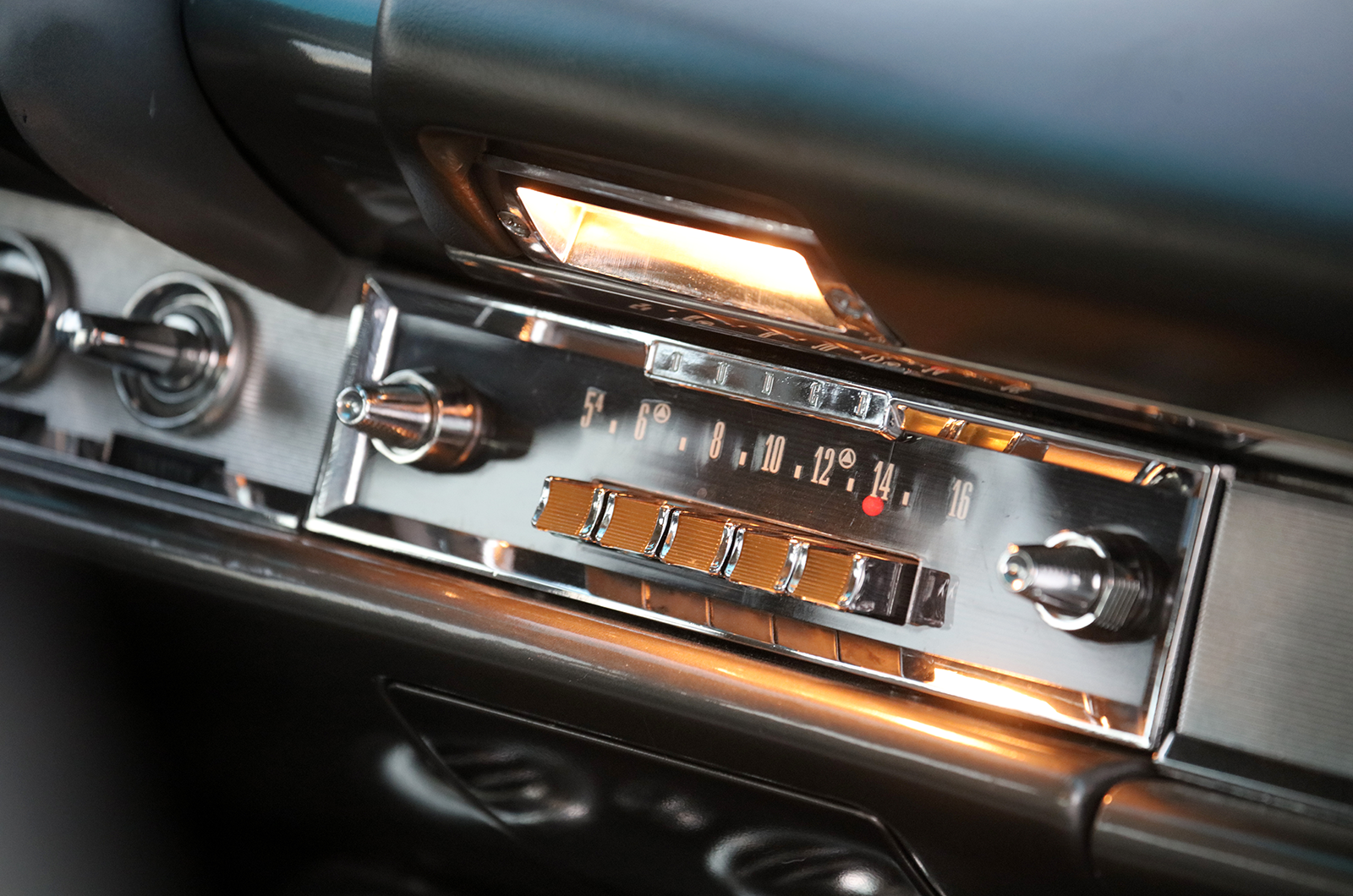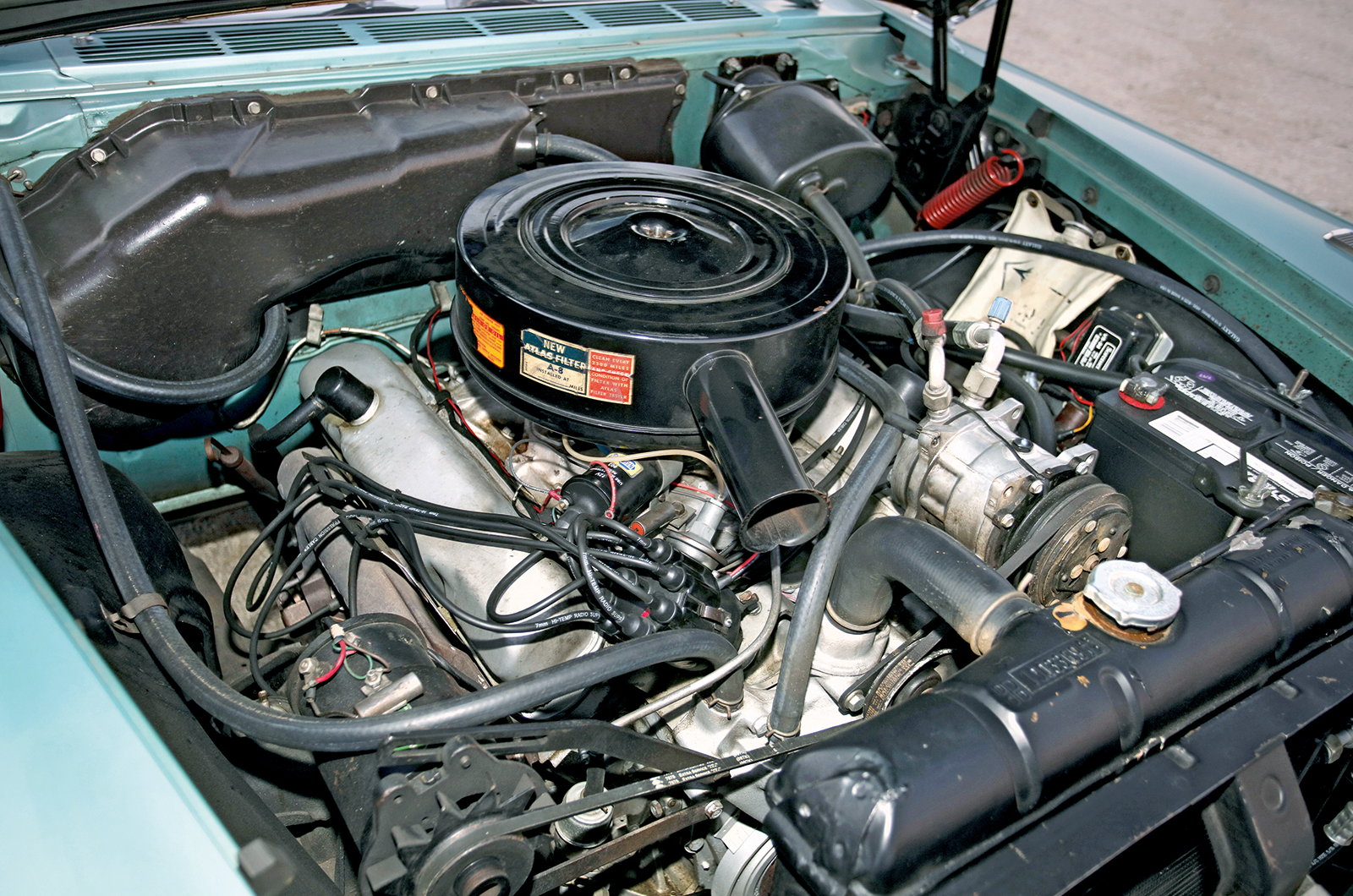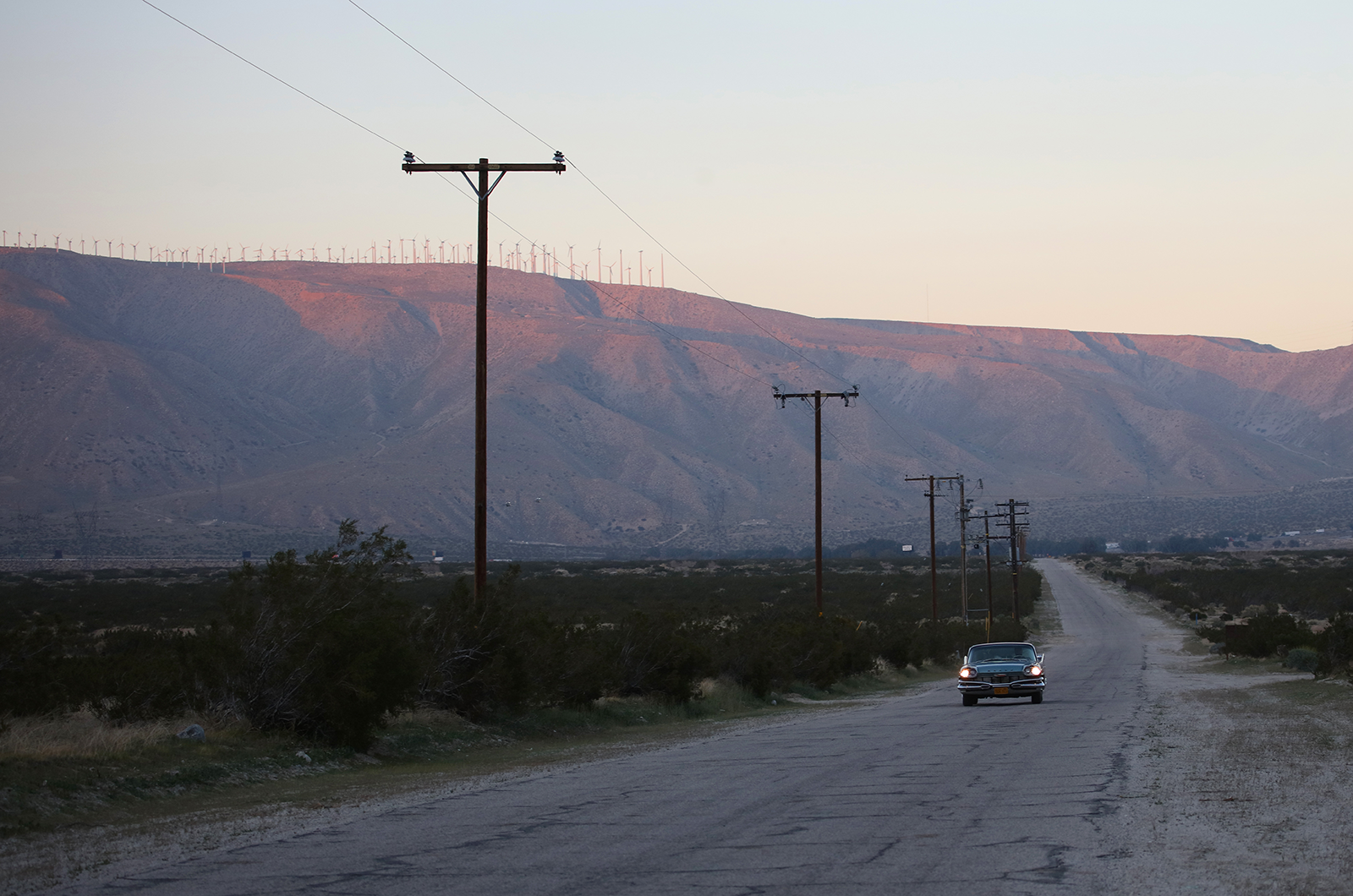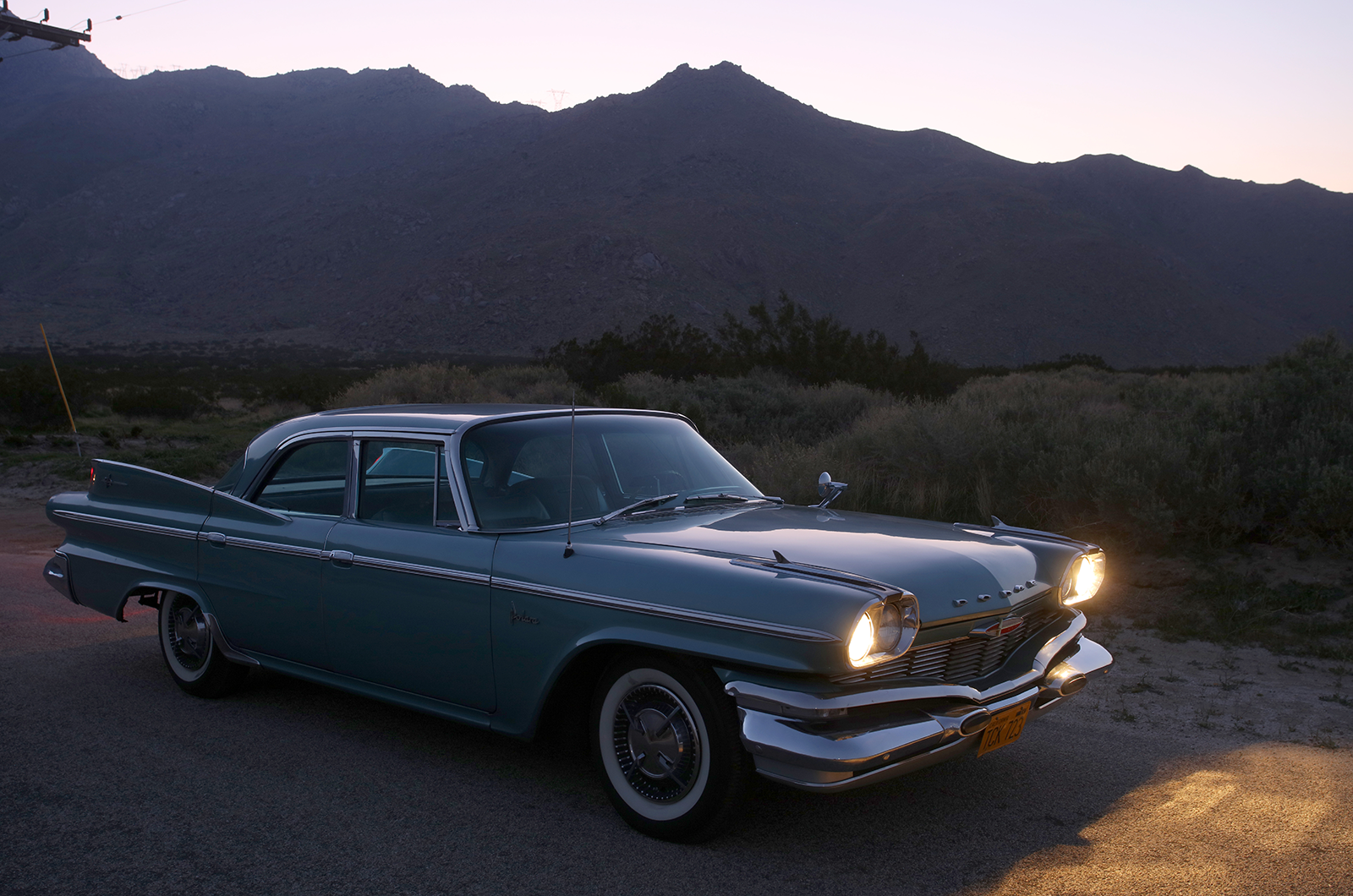Hit the throttle and it picks up well, with a sense of power overcoming inertia as the prow rises gently towards the horizon.
Incredibly, despite its striking looks and impressive performance, Polaras made up just 16,000 of more than 350,000 Dodges that left showrooms in 1960; the smaller Dart accounted for almost nine out of every 10 sales.
Things were little better when its successor arrived in 1961, a more subdued machine with barely more than vestigial fins along its rear wings and controversial rear lights that divided opinion and which contributed to a 50% crash in sales.
The following year the Exner era came to a shuddering halt as the newly designed ’62 cars bombed with the public.
There’s a definite timeless quality about the Polara’s design
Though ‘Ex’ took the bullet, replaced by slab-sided Continental mastermind Elwood Engel, the blame lay elsewhere.
Exner had suffered a heart attack in 1956, halfway through styling the ’61 model year, and while in recovery his ’62 designs were butchered by colleagues, shrunk to fit a smaller platform in response to a downsizing rumour from GM that proved nothing more than hot air.
All great fashion trends eventually enjoy a renaissance, and while the Polara was unloved for a time it now stands as one of the swansongs of the golden age of US car design – and its star is rising.
Exner’s work couldn’t be more of its time, and yet there’s something timeless about it.
Driving through the desert in the irresistible Dodge Polara is quite an experience
It’s kitsch and quirky, and completely irresistible.
After a few hours carving through the desert, cruising along dust-swept roads with no markings and even less traffic, you’re left in no doubt that the Polara was as much a statement piece in period as it is today.
Terry Pratchett wrote of night pouring over the desert, of stars drilled down out of the sky and a bottomless infinity that men have a desperate urge to fill with something higher.
As we drive deeper into the wilderness, the last vestiges of sunlight dipping beneath the San Jacinto Mountains to the west, his words roll around in my mind.
This rare classic Dodge feels like a combination of a bygone age and one yet to come
Out here, where the mid-century bungalows and exotic trees of Palm Springs have long since given way to cacti and tumbleweed, and road signs provide the only anchor to tie us to a time and place, it feels almost as if you might drift away into Pratchett’s purple night.
What car would be better to do it in than this gorgeous Dodge Polara?
It is part spaceship, part time machine, with its otherworldly luminescent dashboard and a sea of translucent coloured plastics and twinkling lights.
At times it feels like being in 1960; at others, it still feels like the future.
Images: James Mann
Factfile
Dodge Polara
- Sold/number built 1960/c16,000
- Construction unitary body with subframes front and rear
- Engine all-iron, ohv 6277cc ‘Wedge’ V8 with four-barrel Holley carburettor
- Max power 325bhp @ 4600rpm
- Max torque 420lb ft @ 2400rpm
- Transmission three-speed TorqueFlite automatic, RWD
- Suspension at front wishbones, torsion bars rear live-axle, semi-elliptic asymmetric leaf springs; telescopic dampers f/r
- Steering power-assisted worm and sector
- Brakes drums
- Length 17ft 10in (5436mm)
- Width 6ft 6in (1981mm)
- Height 4ft 6in (1379mm)
- Wheelbase 10ft 2in (3099mm)
- Weight 3875lb (1758kg)
- 0-60mph 8.8 secs
- Top speed 130mph
- Mpg 11.8
- Price new $3141
- Price now $30-50k*
*Prices correct at date of publication
READ MORE
Heavy metal thunder: Chevrolet Chevelle, Pontiac GTO, Plymouth SuperBird, Dodge Charger and Ford Torino
USA by Lincoln: the ultimate road trip
Critic’s choice: Mark Kermode and his Dodge Coronet
Greg MacLeman
Greg MacLeman is a contributor to and former Features Editor of Classic & Sports Car, and drives a restored and uprated 1974 Triumph 2500TC

